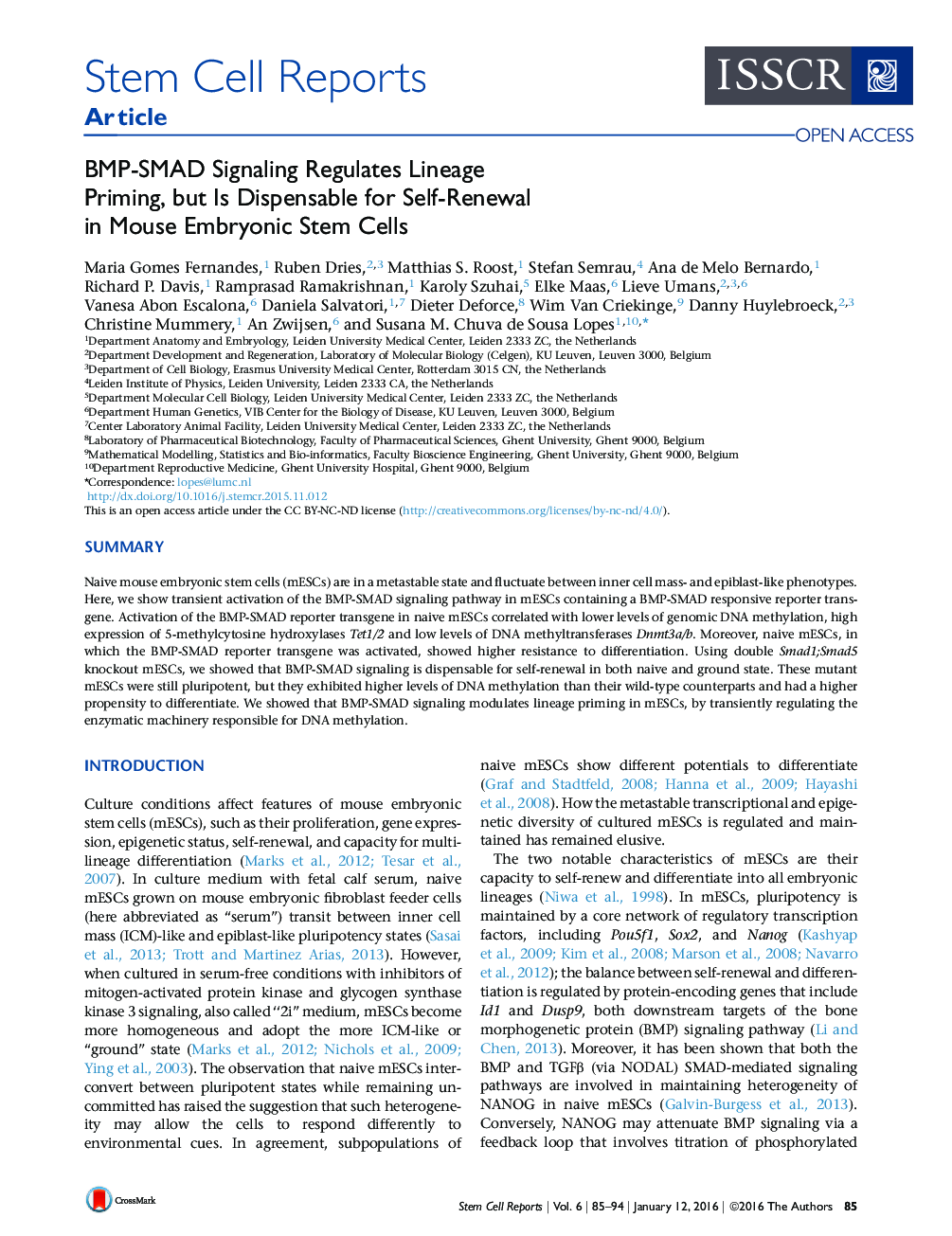| Article ID | Journal | Published Year | Pages | File Type |
|---|---|---|---|---|
| 2093291 | Stem Cell Reports | 2016 | 10 Pages |
•BMP-SMAD signaling in mESCs is more prominent in naive than ground state•BMP-SMAD signaling is dispensable for pluripotency in mESCs•BMP-SMAD signaling facilitates lineage priming in mESCs•BMP-SMAD signaling regulates Dnmt3b and hence levels of DNA methylation
SummaryNaive mouse embryonic stem cells (mESCs) are in a metastable state and fluctuate between inner cell mass- and epiblast-like phenotypes. Here, we show transient activation of the BMP-SMAD signaling pathway in mESCs containing a BMP-SMAD responsive reporter transgene. Activation of the BMP-SMAD reporter transgene in naive mESCs correlated with lower levels of genomic DNA methylation, high expression of 5-methylcytosine hydroxylases Tet1/2 and low levels of DNA methyltransferases Dnmt3a/b. Moreover, naive mESCs, in which the BMP-SMAD reporter transgene was activated, showed higher resistance to differentiation. Using double Smad1;Smad5 knockout mESCs, we showed that BMP-SMAD signaling is dispensable for self-renewal in both naive and ground state. These mutant mESCs were still pluripotent, but they exhibited higher levels of DNA methylation than their wild-type counterparts and had a higher propensity to differentiate. We showed that BMP-SMAD signaling modulates lineage priming in mESCs, by transiently regulating the enzymatic machinery responsible for DNA methylation.
Graphical AbstractFigure optionsDownload full-size imageDownload as PowerPoint slide
